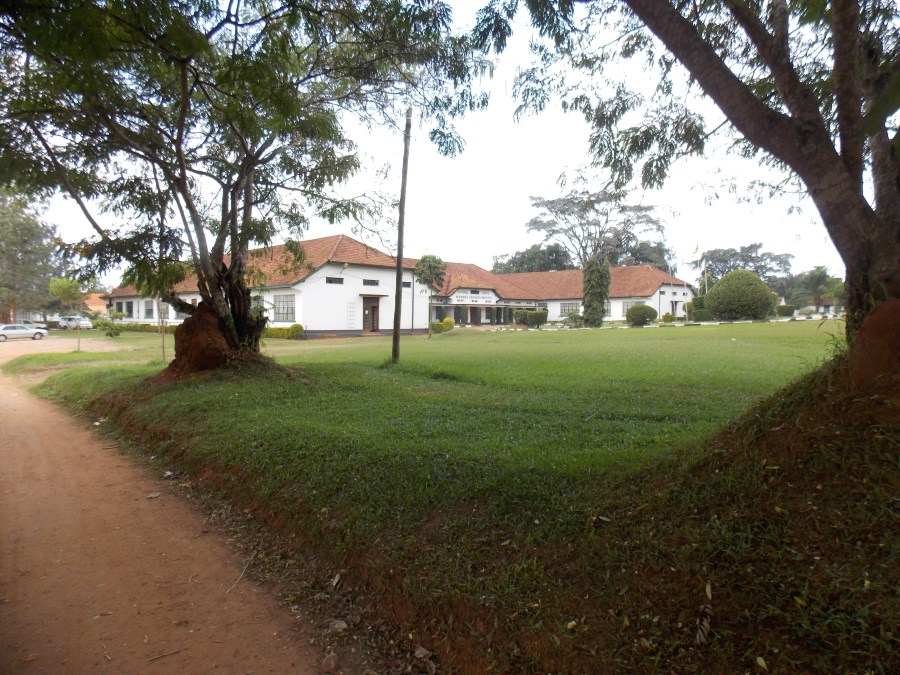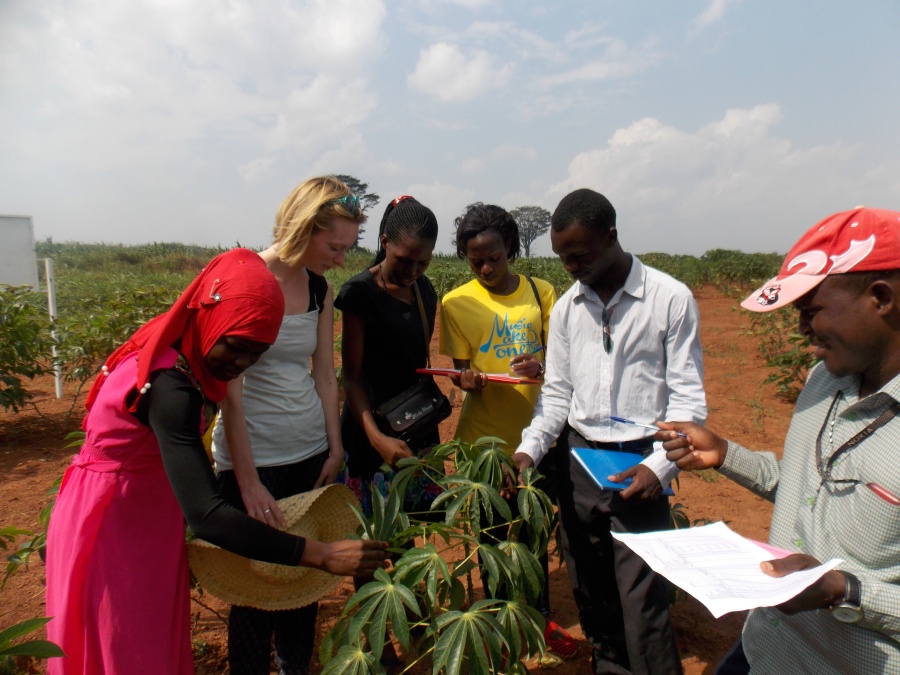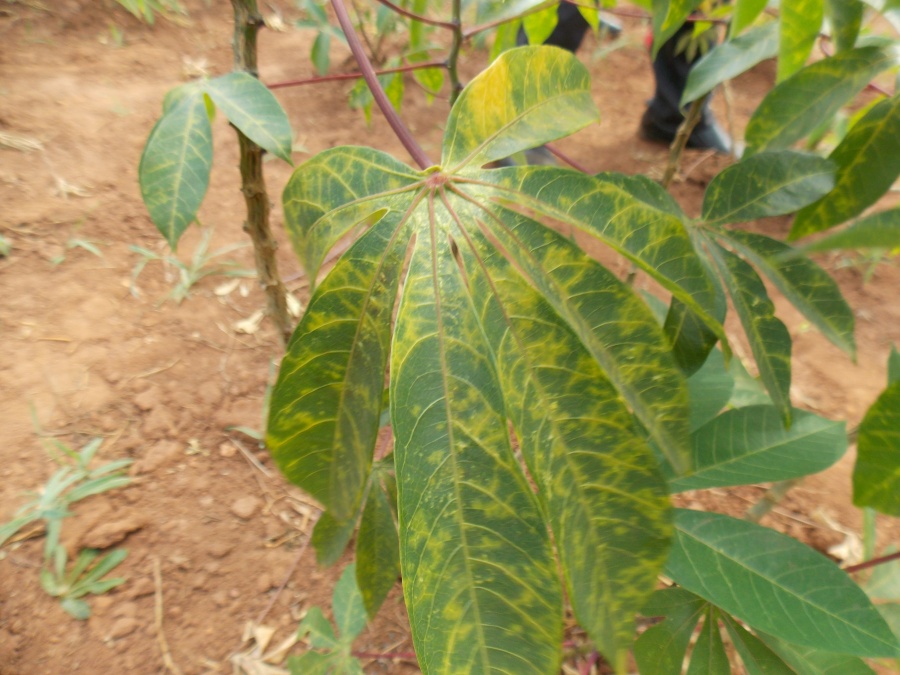Katherine Tomlinson from the School of Biological Sciences at the University of Bristol Cabot Institute, is spending three months in Uganda looking at the cassava brown streak virus. This virus dramatically reduces available food for local people and Katherine will be finding out how research on this plant is translating between the lab and the field. Follow this blog series for regular updates.
I arrived late on Thursday night and spent the weekend getting acquainted with the hustle and bustle of Kampala life. I visited the impressive Gadafi mosque, cathedral, and food markets, which are full of just about every fruit and vegetable you could imagine.
On Friday, I met with my internship supervisor, Dr. Titus Alicai who is the leader of the Root Crops Research Programme at the National Crops Resources Research Institute (NaCRRI); he filled me on some of the exciting activities I’ll be taking part in, including visits to cassava field sites.
I was picked up and taken to NaCRRI in Namulonge on Sunday, stopping off at markets along the way to pick up my food supplies. I am lucky to have Everline looking after me; she’s helping me to settle into Ugandan life. NaCRRI is absolutely beautiful, it’s full of crops including cassava, sweet potato, mango, pineapple, banana, and there are even vervet monkeys running around.
 |
| National Crops Resources Research Institute, Uganda… where I’ll be spending the next three months! |
At the start of the week , I was given a tour of the institute including the labs where they analyse cassava tubers for nutritional and chemical content; a vital part of the process in developing crops which not only offer maximum disease resistance, and yield but also taste good.
I then visited the molecular biology labs, where they analyse crop samples for the presence of Cassava brown streak disease viruses. This was very familiar with similar equipment to our lab at the University of Bristol. The lab manager discussed the challenges of obtaining all the expensive reagents required and how this affects their work. Other challenges include intermittent power supply, which means they need a stack of battery packs to back up the -80 freezers and PCR machines. I am looking forward to spending some time here, to learn more about the similarities and differences between molecular work in the UK and Uganda.
On Wednesday, I went to the field with some University internship students, who were scoring cassava plants for Cassava brown streak disease and Cassava mosaic disease symptoms. After their training these students will be able to advise farmers about the diseases in their local areas. It was also my chance to see symptoms in the field, where infected leaves showed a distinctive yellowing pattern.
 |
| Inspecting cassava plants for disease symptoms with University internship students |
I spoke to one student who has a small farm and has experienced Cassava brown streak disease first hand. He mentioned that the disease is very common in his area, and here even tolerant cassava varieties become infected and their tubers ruined.
 |
| Characteristic Cassava brown streak disease symptoms on cassava leaves |
Today I am meeting with the communications team, to find out about the projects I will be involved with, including an outreach programme with farmers surrounding the NaCRRI site to encourage them to use crop breeds developed by the institute, which offer higher disease resistance.
That’s it for now I’ll be writing another update next week so watch this space! In the meantime if you have any questions please get in touch via Twitter: @KatieTomlinson4.
 |
| Katie Tomlinson |
More from this blog series:
Blog 3: Learning the ropes
Blog 4: Clean cassava to solve brown streak problem?
Blog 5: Taking a trip to the cassava field!
Blog 6: Using GM to fight cassava brown streak disease

